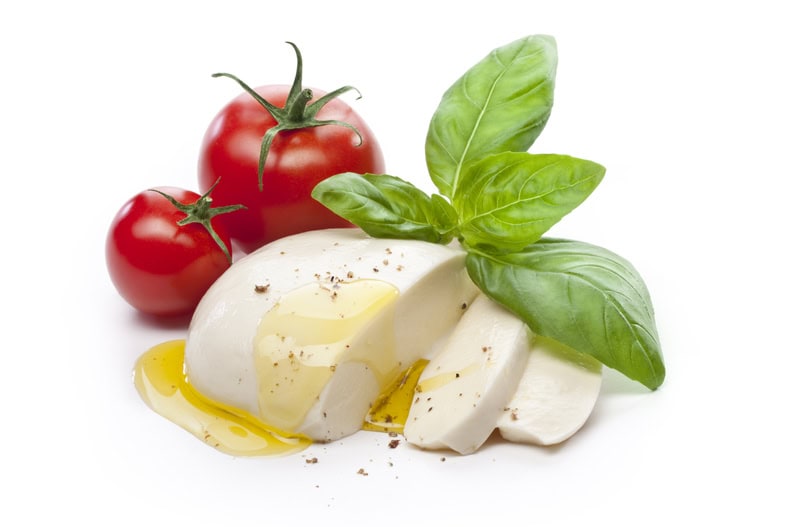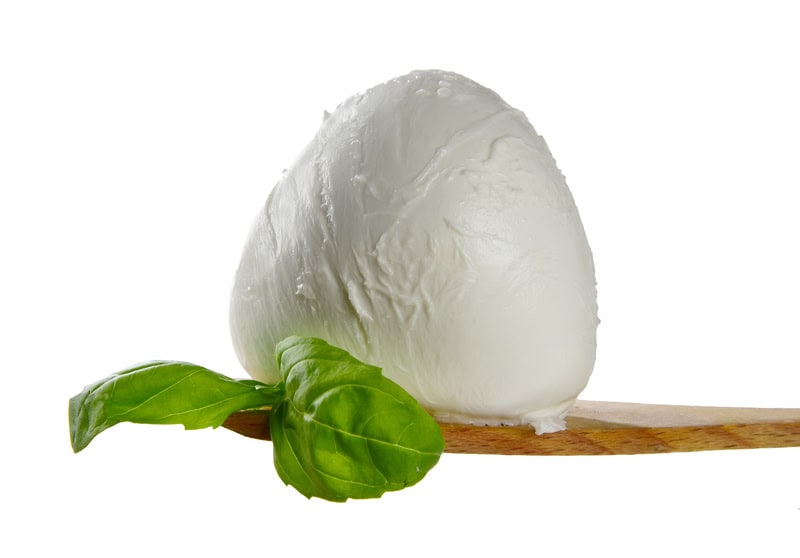
Fresh mozzarella?
Mozzarella is a fresh cheese, a very fresh cheese. As with bread, today’s bread is fresh, yesterday’s, old. This is also the case with mozzarella. It’s just that for the most part at least we Norwegians are not used to it. We mostly eat old grocery-bought mozzarella. If you have been to the south of Italy where they really have a culture for mozzarella, there is no question of eating day-old cheese. After a day it is used, for example, on pizza, but never eaten as is.
In October I was on a trip in Campania and we visited a small winery outside Naples which is actually located in an archaeological excavation area. We had to be approved in advance to be allowed in: number, name and position. There we got fresh Mozzarella di bufala Campana DOP. It has a protected designation of origin. We also got pizza, it was yesterday’s cheese. If you’ve ever tasted fresh mozzarella, you know what I’m talking about. Then it has something to do with lifestyle and tradition. Have just spent a week in Italy, in Rome and the surrounding areas. Had the pleasure of queuing up in Ostia, outside a cheese shop where most people bought fresh mozzarella. Bought a piece of Caciocavallo with me as well after a lot of haggling in English and Italian where we found out it was made from raw milk. Enough about that. There was a queue every morning before the shop opened at half past nine. If you happen to have mozzarella that is not quite fresh, you can click HERE and get some inspiration. A small point I got on my way out from the mozzarella shop in Ostia, they understood I was a foreigner. “No fridge”. I got my cheeses in a thick bag with lots of brine in it. And there they were supposed to be, at room temperature. Done talking.
What is Mozzarella?
The title is a quote from the consortium that governs the regulations for Mozzarella di bufala Campana DOP and may be descriptive. They are of course concerned that real mozzarella is made from buffalo milk, raw or pasteurized for the record. The word mozzarella itself is generic and can be made from any milk, anywhere in the world. And so it is. In short, it can be any kind of fresh cheese as long as it is made according to the pasta filata method. Pasta filata is a production method for cheese that is characterized by the fact that the curd, after it has been cut open and the whey drained off, is allowed to grow together into “cakes” and then left. These cakes are then split and placed in boiling water, kneaded and stretched into long strands. After this process, the curd is shaped in the tradition of the cheese being made, in our case traditional mozzarella balls.

Mozzarella di bufala must be from buffalo milk, naturally enough, and if you throw in Campana, it must come from defined areas. As always, this area is larger today than it was initially. So in addition to Campania where it is said that it all started, today the cheese can be made in parts of Lazio; i.e. the provinces of Latina, Frosinone and Rome, as well as parts of Puglia and Molise, more specifically parts of the province of Foggia and the municipality of Venafro. That’s how it is. One would think that the cheese I bought came from one of the areas in Lazio, but no, a good two hours away from Campania. Handmade in a cheese factory not so old, La Baronia, in Castel di Sasso. Established in 1990.
The cheese often comes in slightly different shapes. A bit like chèvre. Treccia is braided, it appears slightly firmer in texture; Bocconcini are the size of fish balls, Ciliegine is a little smaller and nice to use in, for example, salads. Sometimes it is also called Ciliegine ovolina. Even smaller than Ciliegine is Perlina. Nodini is simply nodular. In addition, of course, Burrata and the perhaps somewhat more unknown stracciatella. Stracciatella is great on its own, but also makes up the filling in a Burrata. It should also be mentioned that mozzarella can be smoked as well, affumicata.
What about Fior di latte?
This is a much less known cheese, at least in this country. However, it is a mozzarella, but unlike the generic variety, it calls for a Fior di latte. It must be made from cow’s milk, and it must be whole milk to use that expression, i.e. full fat milk. No adjustment of the fat content. With maturation of just a few hours, it is fresher than, for example, Mozzarella di bufala, Fior di latte probably appears creamier than the buffalo milk variety.
